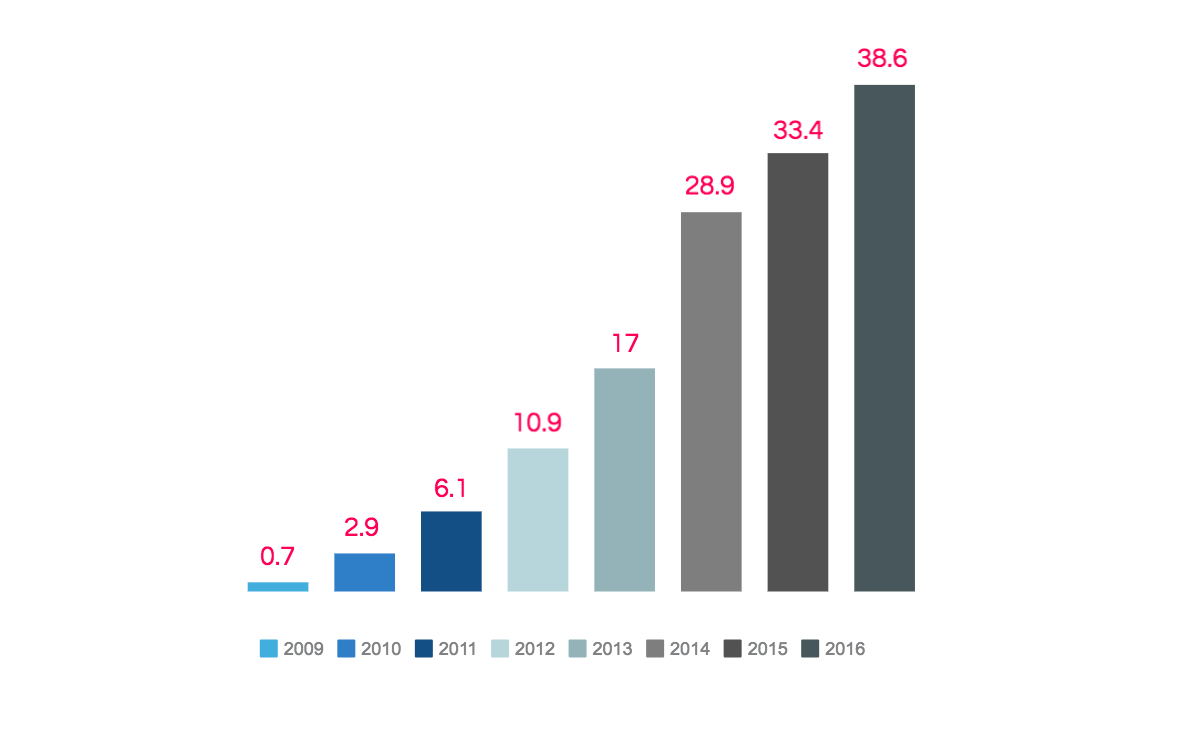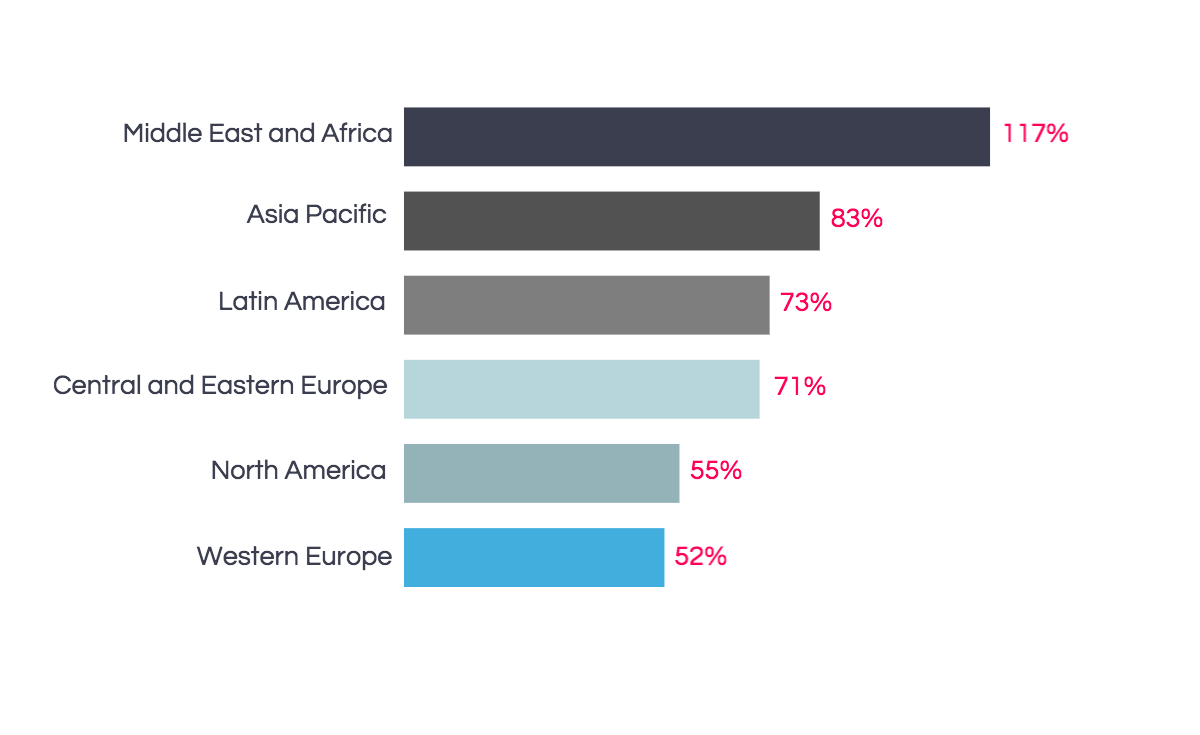
Most people of my age, late 20s, still remember life without smartphones, yet, rather vaguely. Now a mobile phone is kind of an extension of our body 🙂 If I forget my phone at home, the day turns into a disaster. Ok, maybe, that’s a bit exaggerated, but you all know how stressful it is. Just think of your typical day: you wake up to the sound of your the alarm clock, then you have some breakfast scrolling through the news, you check your mail, social media newsfeed multiple times a day, you use apps for buying stuff, ordering a table at a restaurant, fitness tracking and so on and so forth – all using your mobile device.
Why mobile should be taken seriously
Obviously, all mobile traffic indicators are going through the roof and the forecasts predict even steeper growth in the coming years. All the businesses take it seriously and even if they don’t have a mobile app or don’t even need one, they try to make sure their websites are mobile-friendly. Especially since last year when Google announced that Google Search will be expanding its use of mobile-friendliness as a ranking signal. This change has affected mobile searches in all languages worldwide and has had a significant impact on ranking in Google Search results. Users now find it easier to get relevant, high-quality search results optimized for their devices. If you’re not sure whether your website is responsive enough you should try a special Mobile-Friendly Test tool which can test your pages and help you to check how Google sees your site. Some might argue that their users are not on mobile and it doesn’t make sense for them to spend extra money on adapting their websites but after you see the indicators we’re going to show you you’ll change your mind. Besides, even if users might not buy the product using their mobile phones, they oftentimes discover it with the help their mobile devices and take the purchasing decision.
Percentage of all global web pages served to mobile phones from 2009 to 2016

The real mobile indicators and projections are even more impressive than you may imagine. Recently, Cisco has released their research into major global mobile data traffic growth trends.
Here are some of their key findings illustrating mobile data traffic growth in 2015
- Global mobile traffic increased by 74% in 2015.
- Mobile data traffic has grown 4,000-fold over the past 10 years and almost 400-million-fold over the past 15 years.
- 4G traffic exceeded 3G traffic for the first time in 2015. Although 4G connections represented only 14% of mobile connections in 2015, they already account for 47% of mobile data traffic.
- More than half a billion mobile devices and connections were added in 2015.
- Mobile video traffic constitutes 55% of total mobile traffic in 2015.

- Average smartphone usage increased by 43% in 2015.
- By the end of 2015, average iOS consumption exceeded average Android consumption in North America and Western Europe.
- In 2015, the number of mobile-connected tablets increased to 133 million, and each tablet generated 2.8 times more traffic than the average smartphone.
You might assume that the biggest share of mobile traffic lies in affluent countries of North America and Western Europe but you would be mistaken. In fact, the Middle East and Africa have the highest growth rate (117 percent) followed by Asia Pacific (83 percent), Latin America (73 percent), and Central and Eastern Europe (71 percent). At the country level, Indonesia, China, and India led global growth at 129, 111, and 89 percent, respectively. So, maybe you could exploit the growth of mobile traffic in these markets and reach your potential customers via a mobile-friendly website or your own mobile app.
Mobile traffic data growth in 2015 by region

Mobile data traffic projections
Looking into the future of mobile, we can see even more impressive prospects.
- The number of mobile-connected devices per capita will reach 1.5 by 2020.
- The total number of smartphones (including phablets) will be nearly 50% of global devices by 2020.
- 75% of the world’s mobile data traffic will be video by 2020.
- Global mobile data traffic will increase nearly eightfold between 2015 and 2020.
- 67% of mobile devices will be smart devices by 2020, up from 36 percent in 2015.
- The Middle East and Africa will have the strongest mobile data traffic growth of any region followed by Asia Pacific and Central and Eastern Europe.
[announce]
It’s worth noting that mobile video traffic is definitely something you should pay attention to. With the growth of both live and on-demand video streaming and the development of an interactive component of virtually every modern business, video takes up most of the traffic even on mobile which at first sight might seem not very logical. So even if you have your own mobile app and a beautiful responsive website, you should consider implementing video in your business model. In any case, the role of mobile worldwide shouldn’t be underestimated and even if you can’t afford hiring a local team to build your mobile-friendly website, you should consider other big software development destinations like Poland, Brazil or Ukraine. You wonder how much you’d have to spend to go mobile? Just contact us and we’ll answer all your questions!


